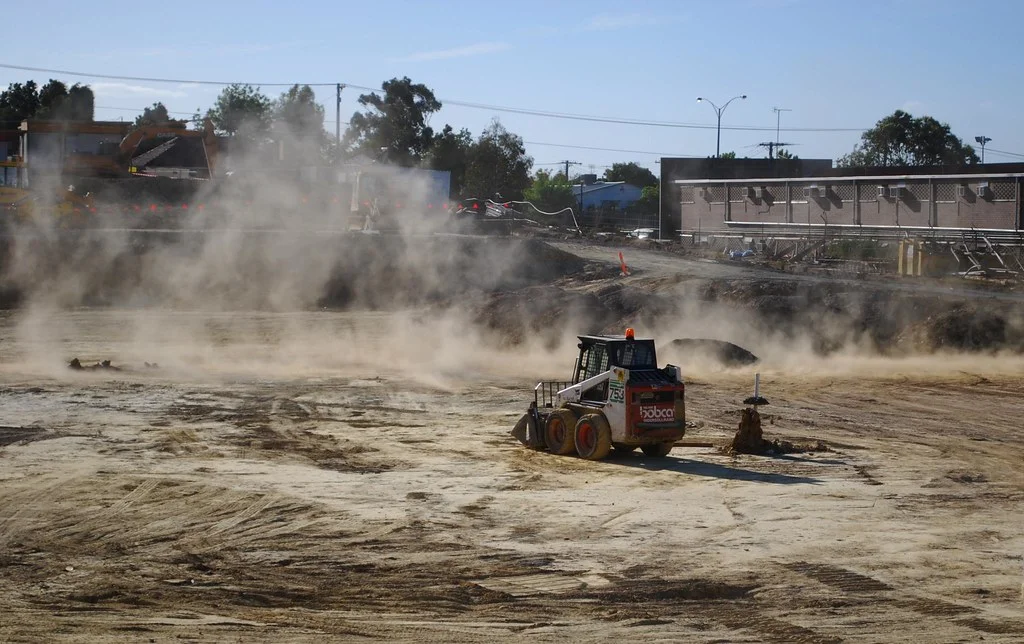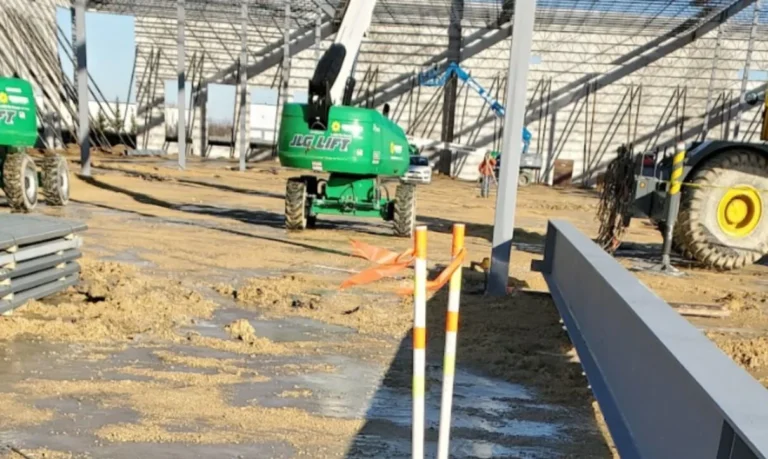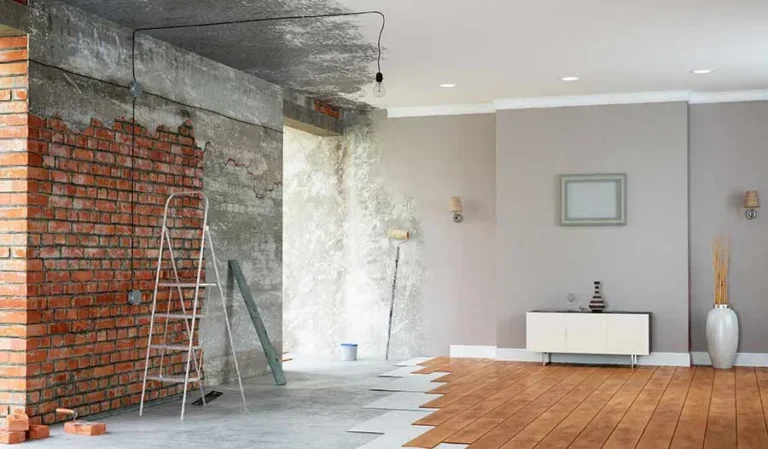How long does new construction dust last?
New construction projects can leave behind a significant amount of dust, impacting both air quality and cleanliness of the new space.
Understanding the duration of new construction dust and employing professional cleaning services can ensure a clean, healthy environment in newly built spaces.
Key Takeaways:
- New construction dust can linger for several months if not properly addressed.
- Professional cleaning is essential to effectively eliminate construction dust and ensure a clean, safe environment.
- Proper cleaning not only removes visible dust but also improves air quality and reduces health risks.
- Investing in professional cleaning services can enhance the overall appeal and functionality of a newly built space.
Understanding Construction Dust
Types of Dust Generated During Construction Projects
Construction projects generate different types of dust, depending on the materials used and the processes involved. You’ll typically find fine particulate matter, silica dust from concrete and masonry, wood dust from carpentry, and drywall dust from finishing services. Each type of dust poses its unique challenges and risks, making it crucial to understand their sources and behaviors.
The Composition and Health Risks Associated with Construction Dust
Construction dust is not a single entity but a blend of various materials. For instance, silica dust comprises tiny particles from the cutting, grinding, and drilling of concrete, bricks, and tiles. These airborne particles can settle on surfaces and linger long after the project is complete.
Exposure to construction dust can lead to severe health hazards, such as respiratory issues, skin irritations, and long-term conditions like silicosis. In environments where teams work continuously, poor air quality due to construction dust can compromise worker productivity and well-being. Organizations prioritizing health and safety must address the health risks of construction dust promptly.
By recognizing the construction dust composition and identifying the construction dust duration, businesses can implement more effective cleaning strategies to foster a healthier work environment.
Factors Influencing the Duration of Construction Dust
Size and Scope of the Construction Project
The size and scope of a construction project significantly influence the duration of dust presence. Larger projects generally produce more dust due to extensive demolition, drilling, and material handling. The more complex a project, the greater the volume of dust generated and the longer it lingers. Detailed planning and phased cleaning can help manage this issue efficiently.
Type of Materials Used and Their Dust Generation Potential
Materials play a crucial role in dust generation. Some materials, like concrete and drywall, produce large quantities of fine particles. Others, such as wood and metal, create varied dust types. Understanding the dust generation potential of these materials can assist in developing targeted cleaning strategies. For instance, projects involving a lot of concrete work should prioritize enhanced dust control methods to mitigate prolonged dust issues.
Recognizing these factors affecting construction dust helps businesses anticipate cleaning needs and implement effective solutions. By addressing the construction project size and material types, organizations can better manage construction dust and its impact on the environment.
Impact of Construction Dust on Indoor Air Quality
How Dust Affects Air Quality in New Buildings
Construction activities, particularly in urban areas, often lead to significant indoor air quality issues. When workers cut, grind, or drill materials like concrete or drywall, fine dust particles become airborne. These particles can infiltrate HVAC systems, settle on surfaces, and remain suspended in the air for extended periods, compromising the environment’s cleanliness.
Poor indoor air quality can have immediate effects on occupants. Symptoms such as coughing, sneezing, and eye irritation can arise, reducing overall comfort and productivity. Businesses need to recognize the importance of addressing air quality and construction dust from the outset.
Long-Term Health Implications of Poor Air Quality Due to Construction Dust
The long-term effects of exposure to construction dust are even more concerning. Fine particulate matter, especially that containing silica, poses severe health risks. Over time, chronic exposure can lead to respiratory diseases, including silicosis and even lung cancer. These conditions not only affect employees’ health but also lead to increased absenteeism and diminished workforce efficiency.
Understanding the health impact of construction dust emphasizes the necessity for proper dust control and removal measures. Proactive steps in managing indoor air quality can mitigate these risks. This is why professional cleaning services are indispensable. They remove both visible dust and microscopic particles, ensuring a safer, healthier environment for everyone.
To maintain optimal indoor air quality in newly constructed buildings, businesses must prioritize comprehensive dust management strategies. Enhanced cleaning protocols significantly reduce health risks, contributing to a safer and more productive workplace.
Regular Cleaning VS Professional Cleaning
Effectiveness of Regular Cleaning Techniques on Construction Dust
Regular cleaning practices, while beneficial for day-to-day maintenance, often fall short when tackling construction dust. Basic methods like sweeping and dusting can only remove surface dirt, leaving behind fine particles. These microscopic particles can remain airborne, infiltrate HVAC systems, and settle back onto surfaces, posing long-term health risks.
Businesses may underestimate the limitations of regular cleaning. Despite diligent efforts, the tools and techniques used are simply not designed for the unique challenges presented by construction dust. This often results in persistent dust, which compromises indoor air quality and poses health hazards to employees and visitors.
Benefits of Hiring Professional Cleaning Services for Thorough Dust Removal
Hiring professional cleaning services offers a more effective solution for post-construction dust. Professionals use advanced dust removal techniques, including HEPA vacuums and air scrubbers, which are designed to capture even the tiniest particles. This ensures that all dust is removed, significantly improving the cleanliness and air quality of the newly built space.
Moreover, professional cleaning services provide a comprehensive approach. They address areas that regular cleaning might miss, such as air ducts and high surfaces. This thorough approach not only makes the environment healthier but also enhances the overall appearance and functionality of the space.
By recognizing the professional cleaning benefits and understanding the necessary dust removal techniques, businesses can make informed decisions that protect the well-being of their occupants. Investing in professional cleaning is a strategic step towards maintaining a pristine and safe environment.
For more information on the advantages of professional cleaning, Discover our comprehensive post-construction cleaning services in Chicago.
Best Practices for Construction Dust Removal
Step-by-Step Guide for Effective Construction Dust Removal
Removing construction dust requires a systematic approach. Here’s a detailed dust removal guide to ensure thorough cleaning:
- Initial Sweep: Start with a broad sweep to gather larger debris. It clears the way for more detailed cleaning.
- Vacuuming: Utilize HEPA vacuums to remove fine dust particles. These vacuums are essential for capturing microscopic dust.
- Wipe Down Surfaces: Use microfiber cloths to wipe down surfaces. They effectively trap dust and prevent it from resettling.
- Air Duct Cleaning: Dust often infiltrates HVAC systems; cleaning air ducts is crucial to maintain indoor air quality.
- Mop Floors: Wet mopping can capture dust that vacuuming or sweeping might miss. It’s especially effective on hard surfaces.
- Final Inspection: Perform a thorough inspection to ensure all areas are dust-free. Missed spots can be corrected immediately, ensuring comprehensive coverage.
Tools and Equipment Commonly Used in Professional Cleaning to Tackle Construction Dust
Professionals use an array of specialized cleaning tools to tackle construction dust effectively:
- HEPA Vacuums: Ideal for fine dust removal; they trap minute particles, ensuring they don’t re-enter the air.
- Microfiber Cloths: Excellent for surface cleaning, these cloths attract and hold dust rather than pushing it around.
- Air Scrubbers: Essential for purifying the air, these devices remove contaminants and improve air quality significantly.
- Wet/Dry Vacuums: Versatile in handling both liquid and dry debris, providing an all-in-one solution.
- Dust Mops: Equipped with static charge to attract dust, excellent for floors and large surfaces.
By integrating these best practices and tools, businesses can implement a robust strategy for construction dust removal, ensuring a clean and safe environment. It’s vital to adopt a comprehensive approach to address all aspects of dust removal effectively.
For further insights, Discover our comprehensive post-construction cleaning services in Chicago.
Enhancing Health and Safety in New Constructions
Preventing Respiratory Issues and Allergies Caused by Construction Dust
Construction dust is a silent threat to health. Invisible particles can be inhaled, leading to respiratory issues and allergies. The fine dust from materials like drywall, concrete, and wood can linger in the air and settle on surfaces, posing significant health hazards. Exposure can cause irritation to the eyes, throat, and lungs, resulting in coughing, sneezing, and long-term respiratory ailments.
To prevent these health issues, it’s crucial to implement effective respiratory issues prevention strategies. This includes using HEPA vacuums to capture fine particles, maintaining proper ventilation, and regular cleaning of high-traffic areas. Businesses can reduce health risks and create a safer environment for employees and clients by taking these measures.
The Role of Professional Cleaners in Maintaining a Safe Environment
Professional cleaners play a pivotal role in maintaining health and safety in new constructions. They possess the expertise and tools necessary to tackle construction dust comprehensively. Using advanced cleaning methods and equipment such as air scrubbers and HEPA vacuums, they can effectively remove even the finest dust particles.
These professional cleaners are trained to address areas often overlooked by regular cleaning practices, including HVAC systems and high surfaces. Their thorough approach ensures a dust-free environment, reducing health risks and enhancing indoor air quality. This attention to detail not only protects the well-being of individuals but also contributes to the overall quality and appeal of the space.
For businesses aiming to uphold high standards of health and safety, investing in professional cleaning services is a wise decision. By integrating professional cleaners into their maintenance routines, businesses can safeguard their new constructions from the adverse effects of construction dust.
For more information, Discover our comprehensive post-construction cleaning services in Chicago.
The Long-Term Benefits of Professional Cleaning Services
Increasing the Longevity and Usability of New Spaces
Professional cleaning services significantly extend the lifespan and usability of new spaces. When construction dust is thoroughly removed, it prevents the premature degradation of surfaces and finishes. Dust can be abrasive, causing wear and tear on floors, furnishings, and fixtures. This wear can lead to costly repairs and replacements over time.
By maintaining a dust-free environment, businesses not only enhance the appearance of their spaces but also ensure that all elements remain in prime condition for longer periods. This approach supports better asset management and reduces the need for frequent refurbishments, ultimately saving both time and money.
How Professional Cleaning Contributes to the Overall Maintenance of Buildings
Professional cleaning services are integral to the overall maintenance of buildings. They use advanced techniques and equipment to address construction dust, ensuring thorough cleaning that surpasses regular maintenance efforts. This comprehensive approach includes deep cleaning of HVAC systems, air ducts, and high-traffic areas, which are often overlooked in standard cleaning routines.
These professional cleaning benefits contribute to a healthier environment, as thorough dust removal can significantly improve indoor air quality. Enhanced air quality reduces the risk of health issues among occupants, leading to increased productivity and reduced absenteeism. Moreover, a well-maintained building creates a positive impression on clients and visitors, reflecting a business’s commitment to excellence.
Incorporating professional cleaning into regular maintenance schedules ensures that all aspects of the building are kept in optimal condition. This proactive measure promotes long-term maintenance and supports the overall building longevity.
For further insights, Discover our comprehensive post-construction cleaning services in Chicago.
Conclusions
Ensuring a dust-free environment in newly constructed spaces is essential for maintaining health, safety, and overall quality. Construction dust, if left unattended, can linger for several months, compromising air quality and posing significant health risks. A clean, healthy space contributes to improved well-being and productivity for all occupants. Professional cleaning services are indispensable in this scenario. They utilize advanced tools and effective techniques to remove even the finest dust particles, providing a comprehensive solution for dust elimination. This approach not only enhances indoor air quality but also reduces long-term health risks associated with construction dust exposure. By investing in professional cleaning, businesses can ensure a safer and more appealing environment for employees and visitors alike. Incorporating professional cleaning into your maintenance routine can lead to substantial benefits. It minimizes wear and tear on surfaces and fixtures, reducing the need for frequent repairs. Additionally, maintaining a clean, dust-free space reflects positively on your business, showcasing a commitment to health, safety, and excellence. For businesses looking to achieve a pristine environment in their newly built spaces, considering professional cleaning services is a strategic move. Our team at Rainbow Property Maintenance offers high-quality construction dust removal services, tailored to meet the unique needs of your space. Learn more about our specialized cleaning services for newly built spaces and take the first step towards ensuring your new space is clean and safe. Consider scheduling a consultation with us to explore how our services can benefit your business. Investing in professional cleaning today ensures a healthier, more productive environment for tomorrow. Together, we can create spaces that truly shine.
Frequently Asked Questions (FAQ):
How long does construction dust typically last without professional cleaning?
Without professional cleaning, construction dust can linger for several months, continuously affecting air quality and cleanliness.
Can regular cleaning techniques effectively remove construction dust?
While regular cleaning can help to some extent, it often fails to remove fine dust particles effectively. Professional cleaning is recommended for thorough dust removal.
Are professional cleaning services worth the investment for new construction projects?
Absolutely. Professional cleaning services ensure all dust is effectively removed, creating a healthier and more appealing environment in newly built spaces.
What tools or equipment do professional cleaners use for dust removal?
Professional cleaners use specialized tools and equipment such as HEPA vacuums, air scrubbers, and microfiber cloths to ensure thorough dust removal.








